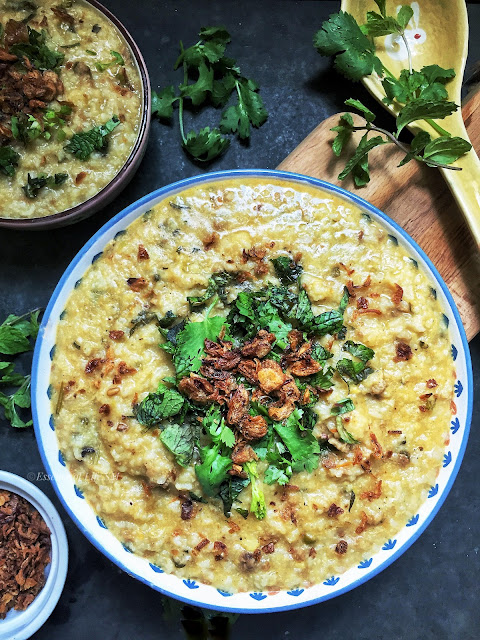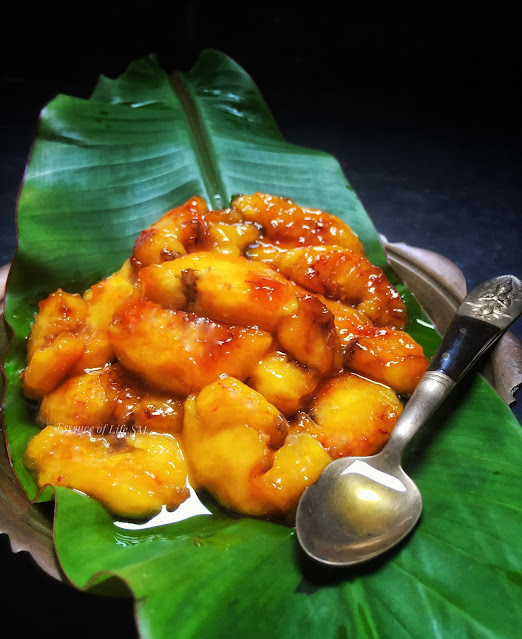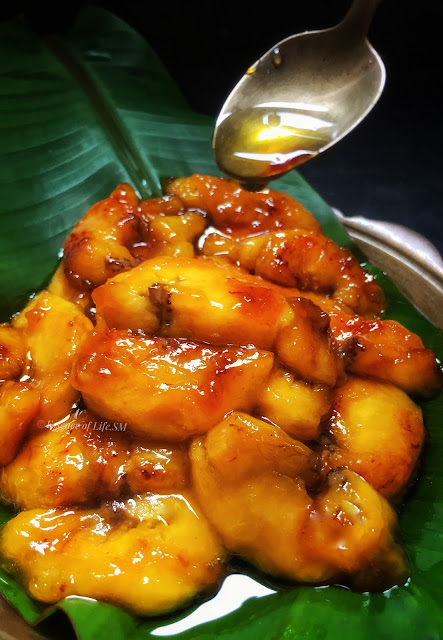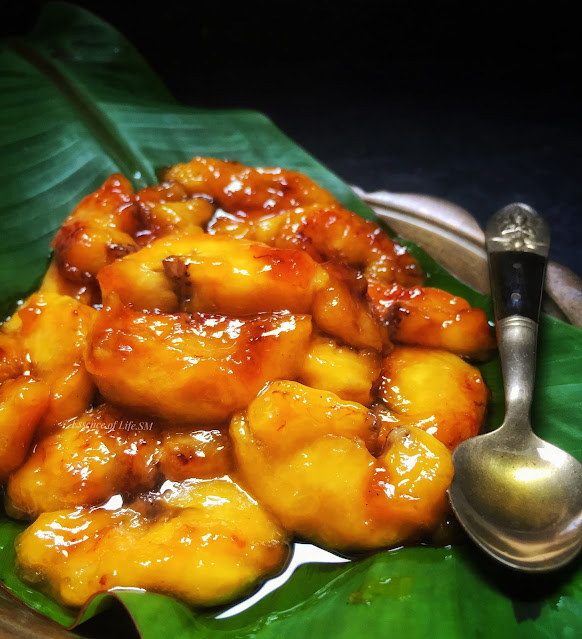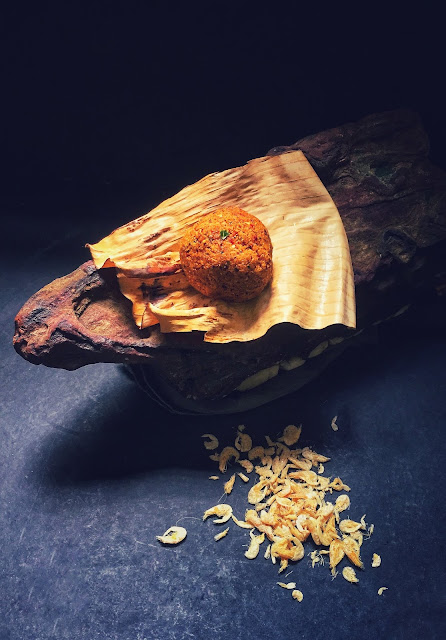 |
"Discover the Comfort of Kerala Kanji: Authentic Methods and Essential Tips!"
Kanji: A Staple in Every Malayali's Diet
Kanji, often revered as the quintessential rice porridge in Kerala, holds a special place in the daily culinary traditions of Malayalis. This effortlessly light yet supremely nourishing dish provides the perfect energy boost needed for the day's tasks. Ideal for soothing and replenishing energy either as a wholesome breakfast or as a comforting dinner, Kanji is traditionally served with a variety of accompaniments. The most popular combination, known as "Kanjiyum Payarum, Chammanthiyum, pinne Chutta Pappadavum," transforms this simple dish into a hearty meal. "Payar" consists of either green moong beans or red beans, lightly stir-fried with a sprinkle of fresh grated coconut. "Chammanthi," a spicy condiment unique to Kerala, blends coconut with shallots, and fiery chillies or sometimes with tangy mangoes or dried shrimps, offering a delightful contrast to the mild porridge. Completing the ensemble, "Pappadam" is either crisply fried in coconut oil for depth of flavour or lightly roasted over an open flame for a smoky finish.
Despite the deep cultural connections and numerous memories I cherish surrounding "Kanjiyum Payarum," I must confess, this beloved dish has never quite won my heart. My earliest recollection of Kanji takes me back to my grandmother's cosy kitchen in Kerala, where my grandfather would savour his morning ritual of Kanji, served in a traditional black-rimmed Pinjaanam (a porcelain bowl), symbolizing elegance and simplicity. Accompanying his Kanji was a Plavila Kumbil, the organic precursor to today’s eco-friendly utensils, fashioned from jackfruit leaves. As a child, it wasn't the Kanji that captured my imagination, but rather the artistry of the Plavila Kumbil.
In my family home, Kanji remains an integral part of our daily routine, with my father often starting his day with a warm bowl of this nutritious porridge. My mother, an adept in the culinary arts of Kerala, frequently experiments with various versions such as Paal Kanji (Milk Rice Porridge), Gothambu Kanji (Broken Wheat Porridge), and Pazhangkanji (Fermented Rice Porridge). Despite its prevalence in our household, my personal encounters with Kanji are minimal. Even on days when illness beckons a soft diet, I find myself opting for a simple slice of bread over Kanji, a testament to my lukewarm feelings towards this traditional dish.
On a memorable journey to Sabarimala in 1982, at the tender age of seven, I encountered the humble yet popular roadside eateries dotting the path. These small shacks proudly showcased their speciality, "Kanji Kappa" (Rice Porridge and Tapioca Stir-Fry), a staple in Kerala's roadside dining. Initially puzzled by the dish's simplicity and its presence in eateries, I soon realized the allure as I observed throngs of pilgrims and travellers congregating around these shacks, drawn by the comforting and satiating nature of Kanji & Kappa. This experience underscored the dish's role in Kerala's culinary landscape, particularly its popularity among those seeking nourishing, hearty meals during their spiritual journeys.
Kanji is a breakfast staple in many Malayali households, a tradition that was also firmly established at my husband's family home. Interestingly, my husband and his father would often discreetly skip the Kanji breakfast, opting instead for the varied menu at Annapoorna Gowrisankar, unbeknownst to my mother-in-law. Over time, as I introduced a diversity of dishes to our morning routine, my mother-in-law gradually phased out Kanji from the breakfast menu. This transition prompted a pointed remark from my mother-in-law, who half-jokingly and half-prickly stated, "Marumakal Kanji Kudi Muttichu," suggesting either that I had ended the Kanji era or inadvertently caused a shortage of traditional food. Her statement was a more keen observation than a warm comment, highlighting her sentiments towards the culinary changes in our household.
For years, I avoided Kanji - Rice Porridge, finding ways to circumvent it. However, fate led me to a critical juncture during my eye treatment in Kerala. Undergoing Ayurvedic therapy for my eye condition, I relied solely on Kanji for sustenance over a rigorous 20-day period, adhering strictly to dietary restrictions. Even during bi-monthly cleansing rituals, Kanji becomes my sole permissible sustenance. This experience taught me to appreciate its simplicity and digestibility, despite initial reservations. I elevate Kanji's humble status by complementing it with an array of side dishes like Vegetable Thorans, Green Moong Dhal Thoran, Red Bean Thoran, Puzhukku, Chammanthis, Achar, and Pappadam.
Kanji can be prepared using various rice varieties such as Kerala Matta Rice, Podi Ari (broken rice), Parboiled Rice, or any long grain variety, including both white and brown rice. It's also a great way to use up leftover cooked rice. Simply boil the rice with a few cups of water until it reaches a soft consistency. Originally considered a humble dish for the economically disadvantaged, Kanji gained popularity for its energy-boosting properties and medicinal benefits. Its mild flavour and rich starch content, including the nutrient-rich Kanji Vellam (Starchy Water), make it an excellent choice for cleansing the system while providing sustained energy.
Course - Main Course
Difficulty - Low
Serves - 3–4
Author - SM
Preparation Time - 5 -10 Minutes
Cooking Time - 20–30 Minutes
Authentic Kerala Kanji Recipe: How to Make Delicious Rice Porridge - Step-by-Step Guide!
Ingredients:
1/2 Cup Par-boiled Rice5–6 Cups of Water
Salt to taste
Pressure Cooker Method:
Quick Kanji Recipe in a Pressure Cooker: Easy Steps to Prepare Kerala Style Rice Porridge!
- Wash the rice thoroughly, around 4-5 times or until the water runs clear.
- Bring 5-6 cups of water to a boil in a pressure cooker.
- Add the washed rice and a dash of salt to the boiling water.
- Close the pressure cooker with the lid and cook on high flame for 3-4 whistles.
- Reduce the flame and let it cook for another 4-5 whistles.
- Turn off the flame and allow the pressure to release naturally.
- Open the lid and stir the Kanji with a wooden ladle.
- Adjust the consistency to your liking.
Sauce Pan Method:
Kanji Preparation in a Saucepan: Simple Method to Make Delicious Kerala Rice Porridge!
- Follow the same washing process for the rice.
- Boil 5–6 cups of water in a saucepan or large pot.
- Add the washed rice and salt to the boiling water.
- Cook on high flame for 10–15 minutes.
- Stir occasionally, then reduce the flame.
- Cover the saucepan with a lid and cook for another 35–40 minutes until the rice is well-cooked.
- Adjust the consistency as desired.
Quick Kanji Recipe with Leftover Rice: Transform Your Leftovers into Delicious Kerala Rice Porridge!
If you have a batch of left-over Rice, you can prepare Kanji quickly.
Ingredients:
1–11/4 Cups Water
Salt to Taste
Method - Kanji with Left-over Rice:
- Take the cooked rice in a wide bowl and add water.
- Boil on high flame for 2–3 minutes, then reduce to medium and cook for 10–12 minutes, stirring occasionally.
- Adjust the consistency as desired.
- Alternatively, microwave uncovered on high for 5–7 minutes.
- If you have the Congee/Porridge Button in the Microwave, the process gets much simpler.
- For pressure cooker method, cook on high flame for 2–3 whistles, then a couple more on low flame.
Notes:
- Rice Varieties: Kanji can be made with various rice types such as raw rice, podi ari (broken rice), red rice, and other long-grain varieties.
- Rice-Water Ratio: Adjust the amount of water based on the type of rice used. As a general rule, use approximately 5–6 cups of water for 1/2 cup of rice in a pressure cooker. For saucepan cooking, use about 5–6 cups of water for 1/2 cup of rice and adjust as needed to achieve desired consistency.
- Cooking Time: Cooking times may vary depending on the rice variety and cooking method. In a pressure cooker, cook on high flame for 3–4 whistles, followed by 4–5 whistles on low flame. For saucepan cooking, simmer for 35–40 minutes or until the rice is thoroughly cooked, stirring occasionally.
- Consistency: Kanji should have a smooth and slightly thick consistency, similar to a porridge. Adjust the cooking time and amount of water to achieve your preferred texture.
Serving Suggestions:
Serve Kanji - Kerala Rice Porridge with your choice of Pickles, Condiments, Side dishes, or Pappadam (traditional Kerala Pappadam fried in coconut oil)/Chutta Pappadam.
Pickles:
Stir-fry/Curries:
- Thick Fish Curry (preferably a day old)
- Dry Fish - Fried/Curry



